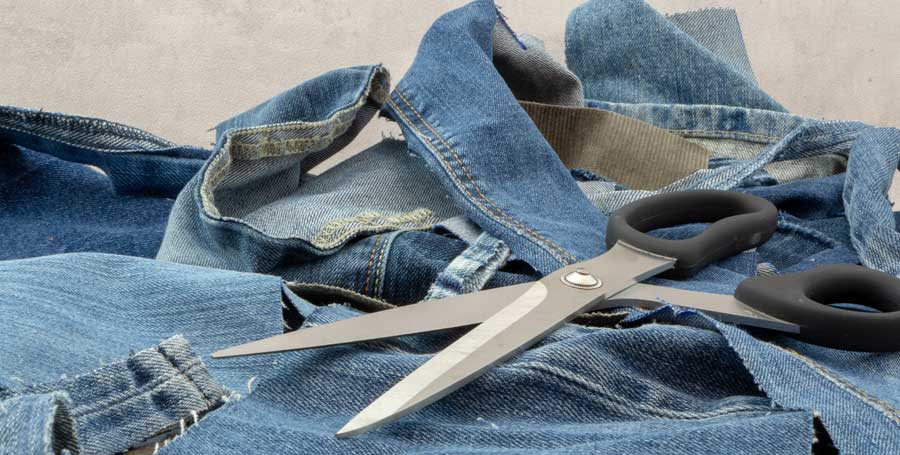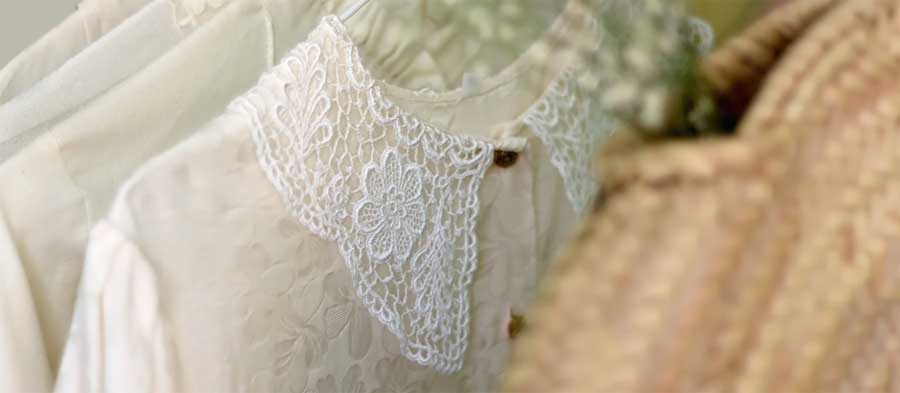Chances are good that you’ve got more than one pair of shears and/or scissors in your sewing room. The old standby is a good pair of dressmaker shears, but there are a few other lesser-known varieties that you may want to add to your tool arsenal. These novelties often have a single function, but sometimes they’re the best tool for the job.
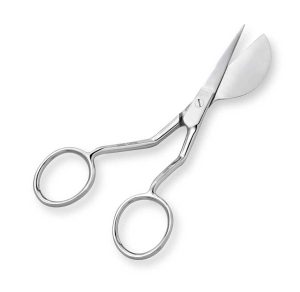 Cut Ups
Cut Ups
Appliqué (duckbill) scissors are perhaps the funniest looking of our scissor choices. They have one large D-shaped blade and one regular blade and are designed to trim close to an appliqué without cutting the fabric base. These scissors are available with either sharp points or rounded points, depending of your cutting confidence.
Pictured: Havels Duckbill Appliqué Scissors
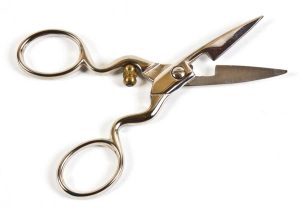 Buttonhole scissors have a screw adjustment that can set the cutting size so that multiple buttonholes are all cut the same length. These replace seam rippers for opening buttonholes and offer a bit more safety than trying to use larger scissors for the opening task.
Buttonhole scissors have a screw adjustment that can set the cutting size so that multiple buttonholes are all cut the same length. These replace seam rippers for opening buttonholes and offer a bit more safety than trying to use larger scissors for the opening task.
Pictured: Tooltron Buttonhole Scissors
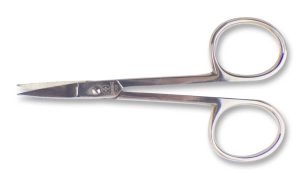 Embroidery scissors are small (3”-5” blades) with very sharp points for cutting threads very closely. Available with straight or curved blades, some embroidery scissors have an antique look with filigree designs or animal shapes, like the heirloom stork scissors.
Embroidery scissors are small (3”-5” blades) with very sharp points for cutting threads very closely. Available with straight or curved blades, some embroidery scissors have an antique look with filigree designs or animal shapes, like the heirloom stork scissors.
Pictured: Mundial Embroidery Scissors
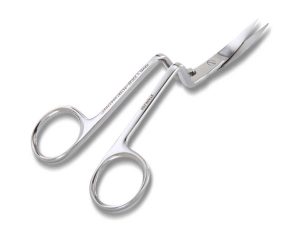 Machine embroidery scissors have curved blades/handles so that you can trim threads closely while the work is still in the embroidery hoop at the machine. Depending on the brand, the handles can be at a right angle to the blades. They’re not limited to machine embroidery and can be used anytime you need to trim something close to a surface, like quilting or free-motion stitchery.
Machine embroidery scissors have curved blades/handles so that you can trim threads closely while the work is still in the embroidery hoop at the machine. Depending on the brand, the handles can be at a right angle to the blades. They’re not limited to machine embroidery and can be used anytime you need to trim something close to a surface, like quilting or free-motion stitchery.
Pictured: Havel’s Ultimate Curved Machine Embroidery Scissors
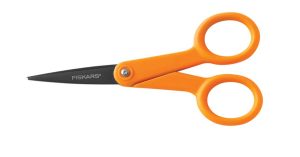 Non-stick scissors have coated blades specifically designed for working with fabrics that tend to stick, like vinyl, laminated cottons, oilcloth and some faux leathers.
Non-stick scissors have coated blades specifically designed for working with fabrics that tend to stick, like vinyl, laminated cottons, oilcloth and some faux leathers.
Pictured: Fiskars Non-stick Detail Scissors
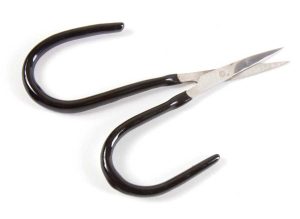 Open-ring scissors have open curved handles (instead of rings), so that they can be used by either right- or left-handed sewers, or anyone with finger or hand issues, as there’s extra space for access.
Open-ring scissors have open curved handles (instead of rings), so that they can be used by either right- or left-handed sewers, or anyone with finger or hand issues, as there’s extra space for access.
Pictured: Tooltron Open Ring Scissors
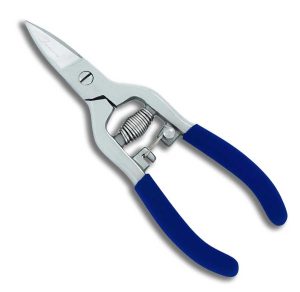 Rag scissors are workhorses designed specifically to cut through multiple layers of fabric at one time, like for rag-edge quilts. Not your typical scissor look, they take on a plier look for more cutting power.
Rag scissors are workhorses designed specifically to cut through multiple layers of fabric at one time, like for rag-edge quilts. Not your typical scissor look, they take on a plier look for more cutting power.
Pictured: Famore Rag Clips
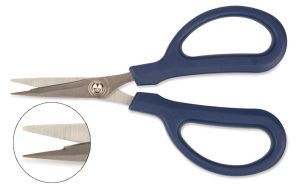 Stitch-cutting scissors have a small hook at one end of a blade to slide under a single stitch and they’re ideal for ripping out stitches without damaging the fabric below.
Stitch-cutting scissors have a small hook at one end of a blade to slide under a single stitch and they’re ideal for ripping out stitches without damaging the fabric below.
Pictured: Havels Stitch Cutting Scissors
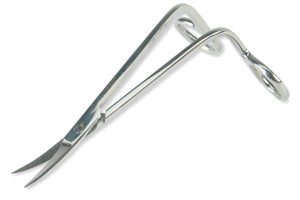 Under-trimmers, like their cousins the machine embroidery scissor, these quirky looking scissors allow for trimming in an embroidery hoop while it’s on the machine, but also have the ability and shape to reach under the hoop as well to trim bobbin threads during the embroidery or stitching process.
Under-trimmers, like their cousins the machine embroidery scissor, these quirky looking scissors allow for trimming in an embroidery hoop while it’s on the machine, but also have the ability and shape to reach under the hoop as well to trim bobbin threads during the embroidery or stitching process.
Pictured: Tacony Undertrimmer Scissors
Close encounters
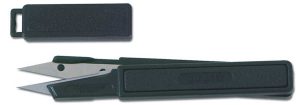 Snips: In addition to this grouping of novelty scissors, don’t forget the ever-handy nippers, snippers, thread clips—the names differ, but the function is the same. Their small, spring-action blades make trimming threads easier than ever.
Snips: In addition to this grouping of novelty scissors, don’t forget the ever-handy nippers, snippers, thread clips—the names differ, but the function is the same. Their small, spring-action blades make trimming threads easier than ever.
Pictured: Gingher Featherweight Thread Snips
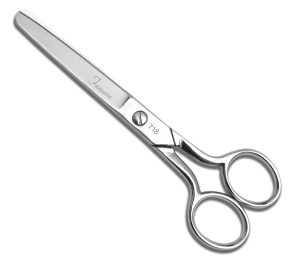 Kids: If you’re teaching sewing to kids, look for blunt-tip safety scissors to prevent major accidents with sharper pointed scissors.
Kids: If you’re teaching sewing to kids, look for blunt-tip safety scissors to prevent major accidents with sharper pointed scissors.
Pictured: Famore Blunt Tip Scissors
~Linda Griepentrog
Linda is the owner of G Wiz Creative Services and she does writing, editing and designing for companies in the sewing, crafting and quilting industries. In addition, she escorts fabric shopping tours to Hong Kong. She lives at the Oregon Coast with her husband Keith, and two dogs, Yohnuh and Abby. Contact her at .





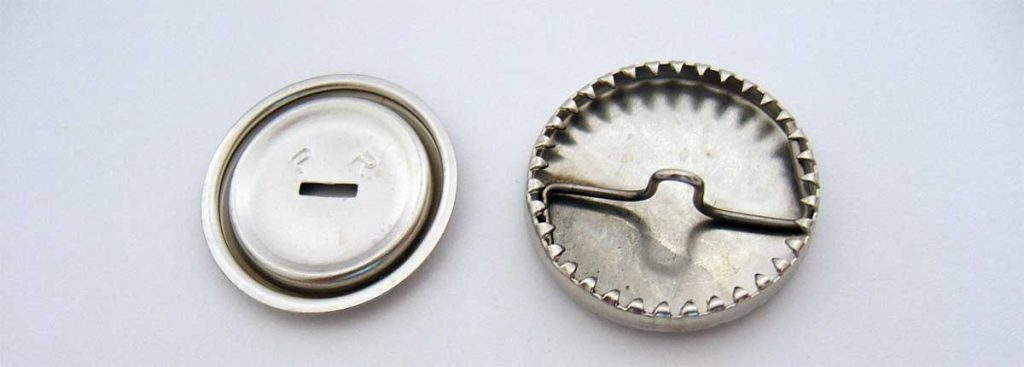
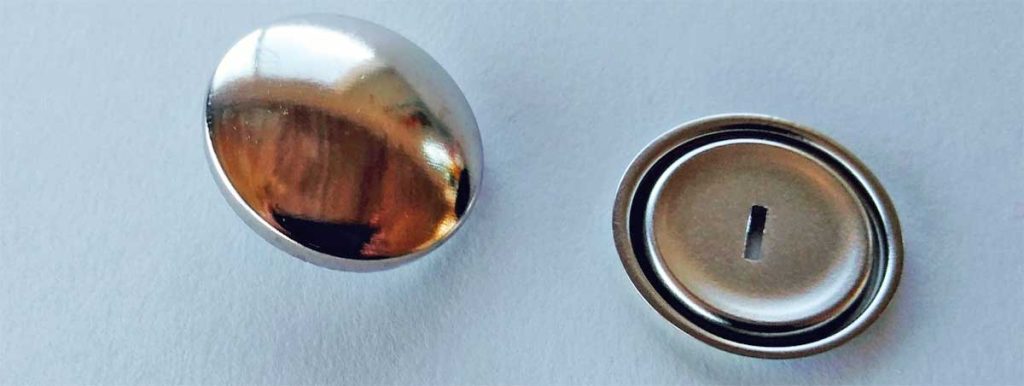
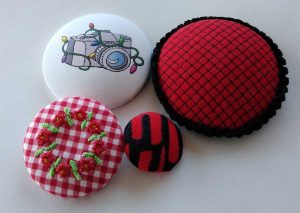
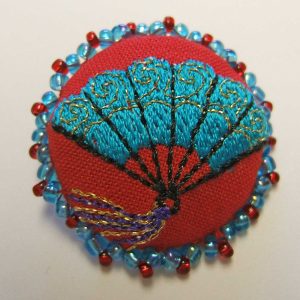
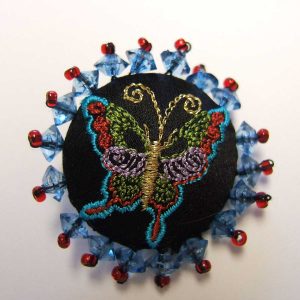
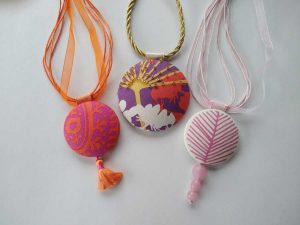
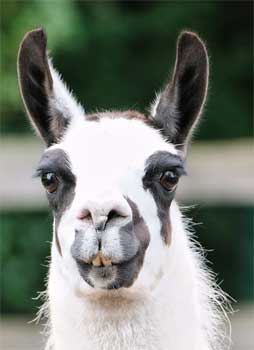 Llamas, part of the camel family, are typically found in South America. Their fine undercoat is typically used for garments, while the courser outer hairs are more commonly used in rugs, wall hangings, and ropes. Llama fiber is normally available in white, black, grey, brown as well as reddish-brown colors.
Llamas, part of the camel family, are typically found in South America. Their fine undercoat is typically used for garments, while the courser outer hairs are more commonly used in rugs, wall hangings, and ropes. Llama fiber is normally available in white, black, grey, brown as well as reddish-brown colors.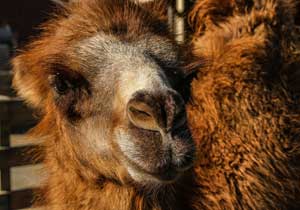 of Mongolia give the softest of camel hairs. China, Afghanistan, and Iran produce the most camel fibers in the world. Although most camel hair is left as its natural tone of golden tan, the hair can be dyed and accepts dye in the same way as wool fibers. Camel hair may be blended to create fabrics suitable for coats, outer sweaters, and underwear.
of Mongolia give the softest of camel hairs. China, Afghanistan, and Iran produce the most camel fibers in the world. Although most camel hair is left as its natural tone of golden tan, the hair can be dyed and accepts dye in the same way as wool fibers. Camel hair may be blended to create fabrics suitable for coats, outer sweaters, and underwear.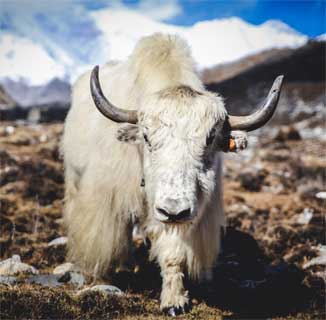 Yaks are largely found in the Himalayas in India and Tibet. The hair of the yak is very useful in the production of warm clothes, mats, and sacks due to its warmth and strength. Yak fiber wool has been used by nomads in the Trans-Himalayan region for over a thousand years to make clothing, tents, ropes, and blankets. More recently, the fiber started being used in the garment industry to produce premium-priced clothing and accessories
Yaks are largely found in the Himalayas in India and Tibet. The hair of the yak is very useful in the production of warm clothes, mats, and sacks due to its warmth and strength. Yak fiber wool has been used by nomads in the Trans-Himalayan region for over a thousand years to make clothing, tents, ropes, and blankets. More recently, the fiber started being used in the garment industry to produce premium-priced clothing and accessories Brushtail possums are harvested under permit, and their soft pelts are plucked, shipped, spun and knitted into high-quality Australian apparel. There are tight regulatory controls over the harvest to ensure the possums were harvested correctly. It is commonly combined with other fibers, frequently Merino wool. When used to create Possum Merino knitwear, the combination of possum in the fabric leads to very lightweight garments. According to some sources, possum fur is 8% warmer and 14% lighter than wool.
Brushtail possums are harvested under permit, and their soft pelts are plucked, shipped, spun and knitted into high-quality Australian apparel. There are tight regulatory controls over the harvest to ensure the possums were harvested correctly. It is commonly combined with other fibers, frequently Merino wool. When used to create Possum Merino knitwear, the combination of possum in the fabric leads to very lightweight garments. According to some sources, possum fur is 8% warmer and 14% lighter than wool.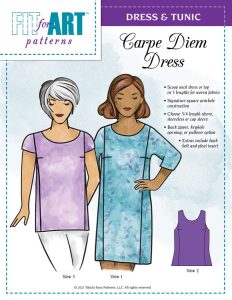
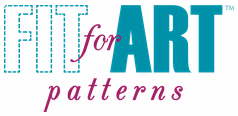
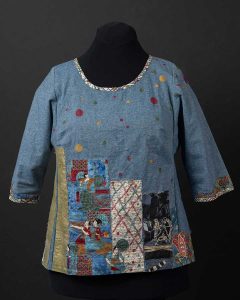
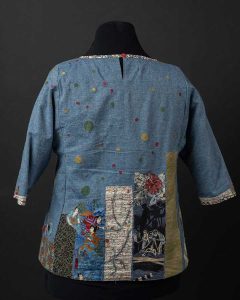
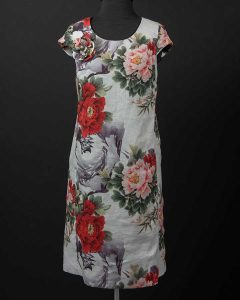
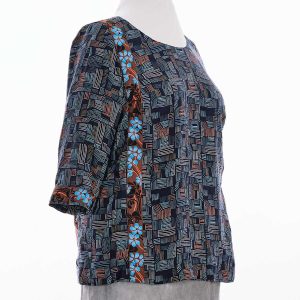
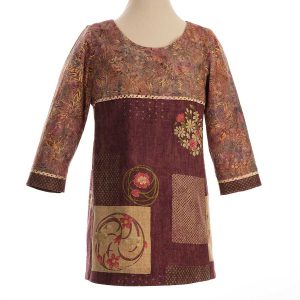
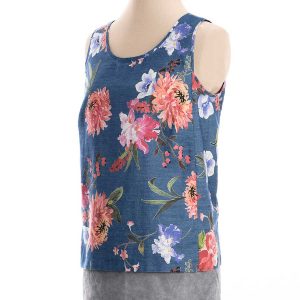

 Check for coupons and discount days, like 50% off a certain tag color or a senior discount. Some stores offer sales with a single fee for an entire bagful. Thousands of buttons can fit into a bag for a buck!
Check for coupons and discount days, like 50% off a certain tag color or a senior discount. Some stores offer sales with a single fee for an entire bagful. Thousands of buttons can fit into a bag for a buck!